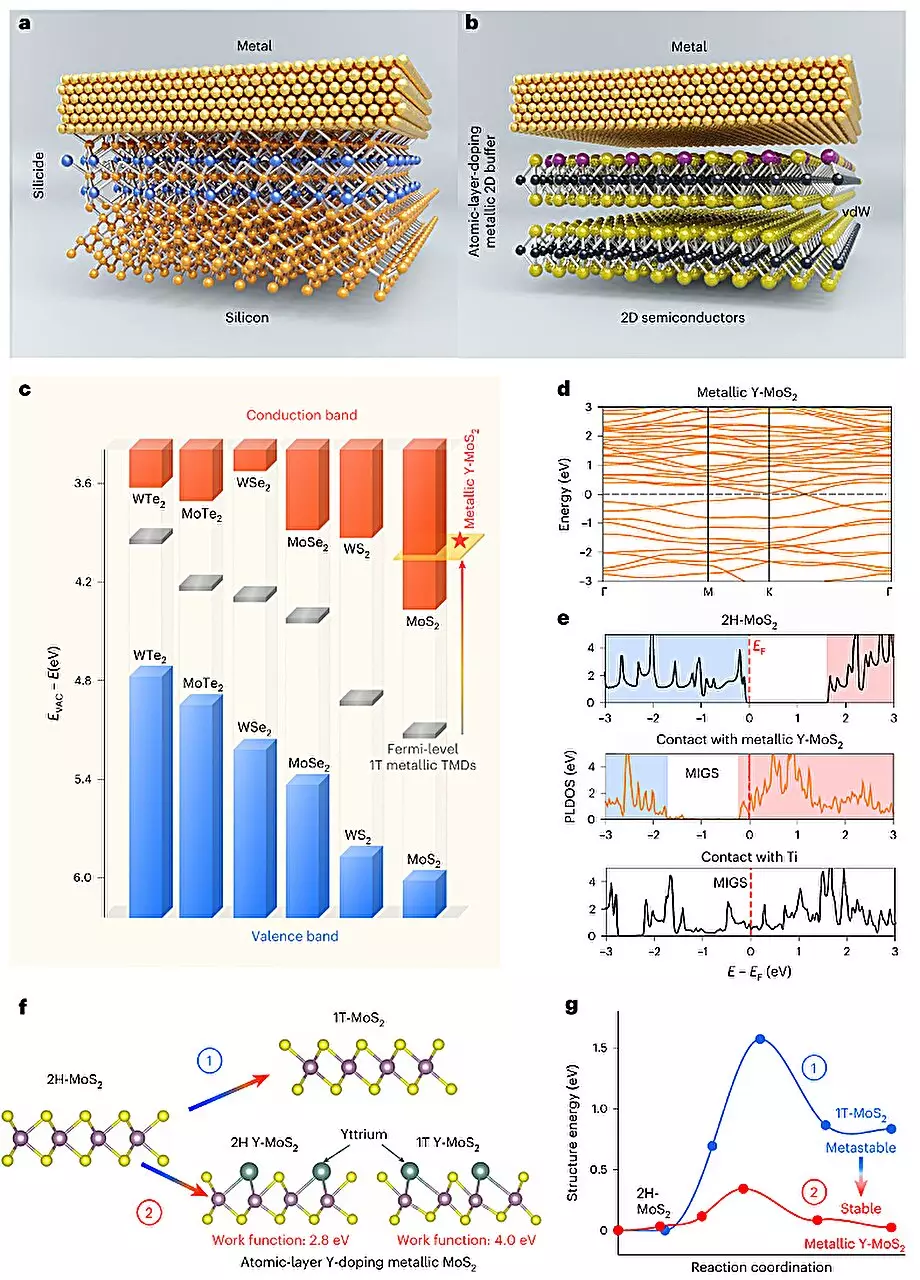The world of electronics is constantly evolving, with researchers and engineers always on the lookout for materials that can enhance the performance of electronic devices. Traditional silicon-based transistors have certain limitations that need to be overcome, and the focus has now shifted towards two-dimensional (2D) semiconductors as potential candidates for next-generation transistors.
One of the key advantages of 2D semiconductors is their atomic thinness, which can significantly improve the electrostatic control and performance of short-channel field-effect transistors (FETs). Additionally, these materials exhibit high carrier mobilities, making them promising candidates for enhancing the overall performance of electronic devices.
Despite their advantages, 2D semiconductors face challenges such as high contact resistances due to Fermi-level-pinning effects. These limitations have hindered their widespread integration in electronics, preventing their large-scale fabrication.
Recently, researchers at Peking University and Chinese Academy of Sciences introduced a new yttrium-doping strategy to address the Fermi-level pinning effects in 2D semiconductors. This strategy involves converting semiconducting molybdenum disulfide (MoS2) into metallic MoS2, thereby improving band alignment and enabling the fabrication of ohmic contacts for 2D transistors.
The researchers developed a plasma-deposition-annealing (PDA) method to achieve yttrium doping in the surface layer of MoS2. By treating patterned local contact areas with low-power soft plasma and depositing a Y/Ti/Au stacked metal, they were able to activate Y atoms as a solid-state doping source in the material.
Through their innovative approach, the researchers observed a phase transition in MoS2, leading to metallization when applying the yttrium doping strategy. This breakthrough allowed for a selective-area single-atomic-layer surface doping technique, achieving a doping depth as low as 0.5 nanometers.
The yttrium-doping strategy has enabled the development of ultra-short MoS2-based channel ballistic transistors with excellent performance as ohmic contacts. These transistors show great potential for use in sub-1 nanometer node chips, promising remarkable performance improvements while consuming less power than conventional chips.
The integration of yttrium-doping strategies in 2D semiconductors represents a significant step forward in the field of electronics. With further research and development, these advancements could pave the way for the creation of high-performance electronic devices that are more efficient and powerful than ever before.


Leave a Reply